Time for your favorite Stanley weekly event – the SIHA Forum and Lecture Series! This is the 15th year of our hosting the summer speaker series, and we have a great lineup this year. Join us at 6pm every Friday, July 8 – August 26 at the Stanley Museum Lawn, right off Highway 75. Bring a lawn chair to enjoy the sun!
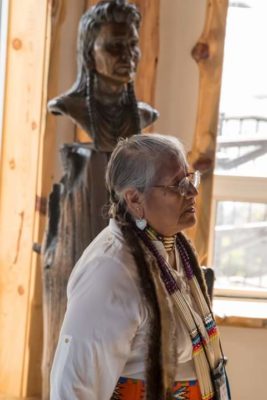
Descendant of the Lemhi Shoshone, Diane Yupe graduated from Idaho State University 1988 in Anthropology/Archaeology, Sociology, Criminal Justice and Law Enforcement. She has worked for Shoshone-Bannock Tribes in a variety of fields including Law Enforcement/Detention, Recreation, Range, Credit, Judicial Council, Courts, Cultural Resources/Archeology/Native American Graves Protection & Repatriation Act and Enterprises. In these roles Diane coordinated with all Federal Agencies and other tribal entities and worked in the Pocatello (Idaho) School District.
Diane was trained in Cultural Resource law and processes, NHPA Section 106 and 110, Archeological Resources Protection Act (ARPA), Federal Indian Law, and Native American Graves Protection & Repatriation Act (NAGPRA).
Diane is currently working in the Tribes’ Contracts & Grants Department and in the Tribal Fish & Wildlife Program as the Native American Interpreter for the USDA Salmon-Challis Forest Service/Frank Church River of No Return Wilderness Salmon River.
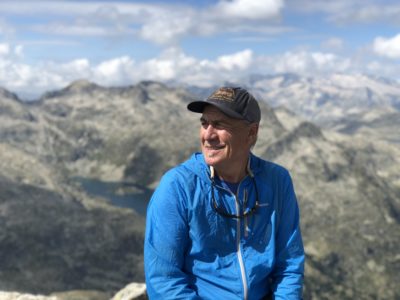
Kirk Bachman will present some of the history surrounding: Dave Williams, the Underhills, Louis Stur, and P. Petzoldt. He will expound upon the nature and ethos that give the Sawtooths their unique character and charm as a mountain range and destination for adventure. Kirk’s program will include the beginnings of historical mountaineering interest and tie it to more contemporary history in Wilderness principles finishing with the challenges for future use and practices.
Kirk Bachman has worked as a mountain and ski guide since the mid-seventies in the Sawtooths and Tetons. He first introduced the Mongolian yurt as a backcountry shelter to the mountains of North America and constructed the first “yurt hut system” in the Sawtooths. Kirk specializes in leading multi-environment trips mountain-to-river, and is also an avid sailor. Guiding internationally, his experiences includes numerous mountain ascents and ski/snowboard descents throughout the South American Andes, exploratory Himalayan climbing, heli-ski guiding in Alaska’s Chugach Range, and adventuring in Alaska, Canada, Mexico, and New Zealand. You can learn more about Kirk’s work at SawtoothOutback.com.

As politicians become more polarized, public lands and wildlife are increasingly vulnerable. Betsy Gaines Quammen focuses on conservation and culture in an era of controversy surrounding climate, conflicts with wolves, and public land disputes.
Betsy is an environmental historian, conservationist, and writer specializing in public land conflicts. Her first book, American Zion: Cliven Bundy, God and Public Lands in the West was published in 2020. Her next book, True West, Sorting Realities on the Far Side of America, comes out next year.
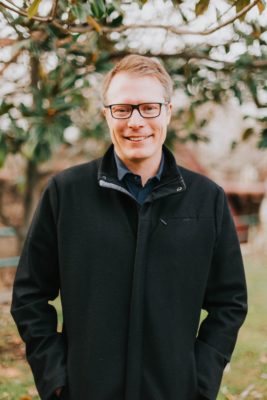
Bats and insects have been battling in the night sky for millenia. In Idaho, some moths jam bat echolocation, allowing the moth to escape! Some Idaho bats use super quiet echolocation to avoid triggering evasive responses by insects with bat-detecting ears! Jesse Barber will discuss this globally-pervasive ancient arms race and how to protect bats and insects to keep Idaho wild.
Associate Professor of Biology at Boise state, Jesse Barber received his MS from the University of Wyoming and his PhD from Wake Forest University. He has been at Boise State since 2011. There he focuses on behavioral, evolutionary and conservation-related questions by employing bioacoustic and videographic techniques to quantify how animals process sensory input and act on the resulting information. His research is driven by working to understand how anthropogenic changes to the sensory environment alter animal behavior. Barber combines field observations and controlled experimental design with an emphasis on natural history, with a focus on problems, not taxa. Current research projects include bats, insects, owls, rodents, and songbirds.

A wide-ranging presentation that covers a diversity of topics, from why mountains constitute wonderful and important natural laboratories, to why pikas are endearing but also a great model to address innumerable questions, to providing a high-level overview of lessons learned from across western North America locally. We will discuss how results depend on the study’s context, what results tell us more broadly about species dynamics in remote mountain systems, and how these results inform climate-adaptation management and conservation.
Dr. Erik A. Beever is a Research Ecologist at the Northern Rocky Mountain Science Center of the U.S. Geological Survey and is Affiliate Faculty in the Ecology Department at Montana State University. Dr. Beever has publications in diverse scientific journals and in diverse subdisciplines of biology. He is a member of the IUCN World Commission on Protected Areas (where he serves as the North American Representative for the Mountains Network), the IUCN SSC Lagomorph Specialist Group, and the IUCN SSC Climate Change Specialist Group. He is also a member of The Wildlife Society (in which he chaired the Biological Diversity Working Group), Society for Conservation Biology, American Society of Mammalogists, World Lagomorph Society, Mountain Research Initiative, and the Consortium for Integrated Climate Research in Western Mountains. He has served as a peer reviewer for nearly 60 scientific journals, and delivered >200 presentations to local to international audiences. He has performed field research on plants, soils, insects, reptiles, amphibians, birds, fish, and small, medium, and large mammals, and in a range of ecosystems of the western hemisphere. In addition to investigating numerous aspects of disturbance ecology, he also seeks to understand mechanisms of biotic responses to climate variability and change, and monitoring in conservation reserves, all at community to landscape scales, as well as other topics of conservation ecology, wildlife biology, and landscape ecology. He is interested in questions at the nexus of basic and applied science, especially those that also inform management and conservation efforts for species, communities, and ecosystems. After receiving his undergraduate degree in Biological Sciences at U.C. Davis, Erik received his Ph.D. from the Program in Ecology, Evolution, and Conservation Biology at the University of Nevada, Reno.

The stories of our Wilderness history are dominated by a few key figures: Bob Marshall, Aldo Leopold, and Howard Zanhiser. In this program, we will hear a few stories of the important female figures who also contributed to our Wilderness history, including Bethine Church.
Michelle Reilly serves as the USFWS liaison and training representative at the interagency Arthur Carhart National Wilderness Training Center in Missoula, MT. Michelle earned a Ph.D. from Northern Arizona University where she worked with government and non-governmental agency to investigate the effects of non-motorized recreation on a suite of mammals.

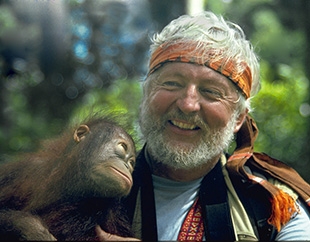
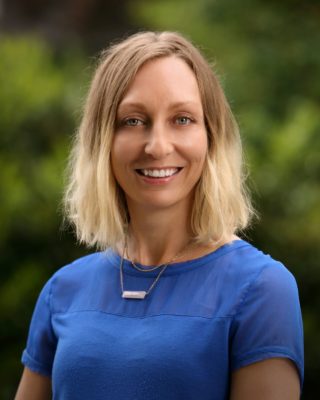
Join us for a look back at to the years just before the Sawtooth National Recreation Area (NRA) was established, when grassroots efforts were working to bring a bipartisan collective together to form the Sawtooth NRA and how this great Idaho experiment has fared.

In the early 1970s, a relative abundance of salmon still returned to the upper Salmon and the new Sawtooth NRA. If the lower Snake River is freed of its four dams, that same relative abundance, or better, is likely to again return in the 2050-2070 window. Times have changed since the 1970s, and so has the upper Salmon. What will it be like, for fish, people and place? Pat will explore some parts of that very large question with humility but also with faith in the fish.
Pat grew up in Idaho Falls, and has lived in Boise since 1977. He worked for the Idaho Conservation League in the 70s-80s, then helped found the Save Our wild Salmon Coalition in 1991 and worked for it until 2013. He is still at work, without pay, to restore salmon to central Idaho. He and his wife Julia Page live in Boise, as do his two daughters and two grandchildren. He seeks the blessings of the upper Salmon and its public lands as often as he can.